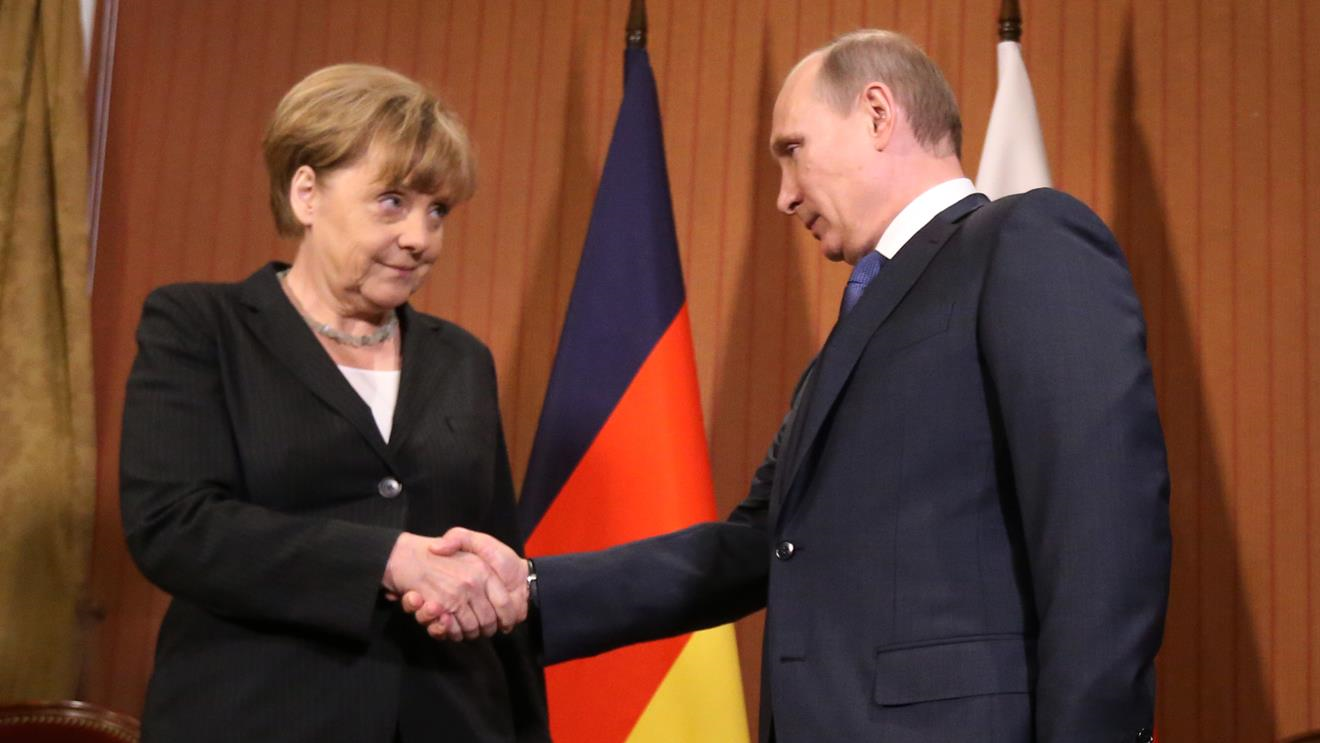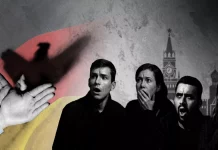
Because of the internet’s increasingly prominent role in Slovak politics and political campaigning, the role of disinformation outlets is even more significant. Photo: Bratislava. Source: pixabay.com
By Miroslava Sawiris, for Disinfo Portal
For many observers in Slovakia as well as abroad, the Slovak presidential election in March was a glimmer of hope. The vote and its outcome stood in stark contrast to the current sociopolitical climate prevailing across much of Europe and the United States, characterized by the strong influence of populism, nationalism, and resurgent far-right politics in deeply polarized societies.
The unlikely victory of Zuzana Čaputová, a pro-European, liberal environmental activist, seemed almost unimaginable just a few weeks ago under such circumstances. How could an unknown environmental activist and lawyer with liberal views, and on top of everything, a woman, stand a chance in Slovakia’s conservative society? Čaputová’s victory might prompt one to wonder whether the Slovak population is as nationalistic and xenophobic as local populistic leaders claim. Certainly, such an interpretation is very tempting, and many have eagerly adopted it in the hope that this deviation from current political trends could trigger a liberal democratic revival in the region.
However, such an interpretation underestimates the factors that shaped the election’s outcome. A specific combination of variables launched Čaputová into the presidency. Two anti-system candidates achieved rather substantial gains in the election. Štefan Harabin, a former justice minister, Constitutional Court judge, and favorite of local disinformation propaganda outlets, finished third in the first round of the election with 14 percent of the vote. Marian Kotleba, the controversial leader of the far-right Kotleba-ĽSNS party, won 10 percent of the vote. The Slovak Supreme Court recently held a hearing on whether Kotleba’s party should be dissolved, as its fascist tendencies, activities, and program may be in breach of the Slovak constitution.
These two candidates combined received almost 25 percent of the vote. Their success may be attributable to robust efforts by disinformation channels to influence the election. Some of these efforts sought to promote Harabin in particular, while others engaged in sustained character assassination campaigns toward opposing candidates. A recent GLOBSEC report analyzed the messaging of the disinformation channels that promoted the extremist candidates in the lead-up to election day.
Online battlefield
As with other elections, quantifying the extent to which disinformation outlets shaped the Slovak presidential race is difficult. However, the activity throughout the race of the most relevant Facebook disinformation pages can help to approximate the outlets’ impact. Figure 1 illustrates the reach of some of the most influential disinformation Facebook pages, with Sila pravdy (The power of the truth) accumulating almost seventy thousand page storytellers. (“Storytellers” refers to the number of users mentioning the page itself in their posts.) For comparison, seventy thousand people is the population of a larger city in Slovakia.
Other outlets, such as the Hrica Lubos page, managed to augment their relevance by providing a running commentary on the presidential campaign. Hrica Lubos had been little-known in Slovakia up until the end of January, but the page quickly built an audience of around twenty thousand users when the presidential campaign started.

GLOBSEC researchers monitored the fourteen most relevant Facebook disinformation channels throughout the campaign to assess their reach, candidate portrayal, promoted narratives, and tactics to ascertain their desired voting behavior and longer-term goals.
Careful analysis of 1,312 posts over time shows that these preferred Harabin. The former justice minister proudly demonstrated his links to the disinformation channels on his official candidacy website, where he quotes his interviews with Zem a Vek and Extraplus, two wide-reaching Slovak channels notorious for spreading pro-Kremlin propaganda.
Figure 2 analyzes the sentiments associated with posts about Harabin on the monitored Facebook pages over time. The findings clearly show that Harabin’s support on these pages had been unwavering up to the first round of the election, at which point his mentions declined after not advancing to the election’s second round. Overall, despite his many scandals as a judge and former justice minister closely associated with the dark era of the 1990s and the rule of Prime Minister Vladimír Mečiar, his portrayal on these pages has been predominantly positive. Up to the first round of the election, he also received the highest number of mentions overall.

In contrast to the favorable coverage Harabin enjoyed on these channels, Čaputová was the target of a sustained character assassination campaign. This campaign extended across multiple channels, including the official Facebook page of Slovak MP Ľuboš Blaha. Blaha’s page spread numerous accusations and conspiracy theories about Čaputová. He claimed that Čaputová is merely a tool of the same oligarchs who tried to orchestrate a coup in Slovakia, a conspiracy theory aimed at discrediting the mass protests that broke out in Slovakia following the murder of the journalist Ján Kuciak and his fiancée Martina Kušnírová. Blaha claimed that after the failed “coup,” the oligarchs financed Čaputová’s campaign in order to ensure that “American liberals steal Slovakia.” Official disclaimers under several of Blaha’s posts suggested that the SMER-SD party paid for these character assassination efforts as part of Maroš Šefčovič’s presidential campaign.

The disinformation channels used other tactics used to discredit Čaputová. Some of the pages circulated photoshopped picture of her face to suggest that she has Semitic features. This tactic, linking her to George Soros and tapping into anti-Semitism and other well-established prejudices and fears among the Slovak population, is a favorite of disinformation outlet Zem a Vek (Figure 4). Particularly intense has been the effort by prominent Catholic priests to portray Čaputová as a perverted, pro-abortion libertarian, claiming that voting for her would be a grave sin. The priests’ embrace of such messaging illustrates the comfortable alliance between some representatives of the Catholic Church and the disinformation scene in Slovakia.

Figure 5 summarizes the efforts to denigrate Čaputová. The graph documents the number of mentions and the dominant sentiments associated with Čaputová on the monitored channels. The findings show that until another liberal candidate, Robert Mistrík, withdrew his candidacy in Čaputová’s favor, the disinformation scene hardly paid attention to her. It was only after she emerged as a viable competitor against Harabin that the disinformation outlets initiated sustained and growing character assassination campaigns against her.

Long-lasting effects of disinformation campaigns
The overall strategy of the disinformation channels was two-fold. Discrediting a particular candidate was just one, short-term goal of the outlets’ larger strategy. The other goal had longer-term consequences: to erode citizens’ trust in democratic institutions and processes.

The disinformation outlets pursue this second goal of undermining trust in democratic institutions through frequently repeated narratives such as “liberalism is a foreign ideology undermining the stability of our society” and “the election has been tampered with by entities with hidden interests.” The creators of these narratives often combine them with conspiracy theories, suggesting, for example, the involvement of George Soros, financial elites, or foreign influence.
The monitored propaganda channels build on pre-established conspiracy theories. A popular example is the theory that secret societies control world governments. Given that 52 percent of the Slovak population believes this theory, the utility of preexisting stereotypes and prejudices for disinformation outlets is clear.
The generated effect of the narratives favored by the outlets is a misrepresentation of democratic processes, which are portrayed as corrupt and dysfunctional. Narratives insisting that traditional media (just like any other solid source of information) cannot be trusted because they have conspired “with the elites” further alienate the audience of this messaging. With the reliability of traditional media in doubt, the disinformation-oriented channels enjoy their audiences’ belief that the outlets are the only non-biased source of information in the media landscape.
As noted earlier, the goals of these narratives are both short- and long-term. Their spread will not ebb just because of the conclusion of the presidential election. On the contrary, the constant process of citizen alienation will continue and could even intensify prior to the upcoming European Parliament elections and the Slovak parliamentary elections next year.
Conclusion
Zuzana Čaputová’s victory in the recent Slovak presidential election was not its only unique feature. To a significant extent, the move away from traditional campaigning via billboards and mainstream media appearances toward much stronger social media campaigning is new for Slovak politics. A strong online presence, whether through candidates’ official Facebook profiles or those which unofficially support a particular candidate, now plays a large role in mobilizing voters.
Because of the internet’s increasingly prominent role in Slovak politics and political campaigning, the role of disinformation outlets is even more significant. Even though a liberal, pro-European candidate won the election, the ongoing influence of disinformation should not be underestimated. Kotleba and Harabin split the anti-establishment vote, while liberal democratic voters united, in this case, behind one specific candidate.
This pattern will be difficult to repeat in the upcoming European Parliament elections. Anti-establishment votes may flock to the Kotleba-ĽSNS party. (Harabin denies any interest in establishing his own party for now.) In the Slovak political landscape of fragmented opposition parties, the unification of liberal democratic votes behind one political party is notoriously more difficult than drumming up support for one particular candidate.
In the meantime, the Kotleba-ĽSNS party is ready to capitalize on Marian Kotleba’s performance in the presidential election and can rely on disciplined voters. Regardless of any forecasts, the activity, support given to particular parties, and narratives deployed by the disinformation scene will play a role in the conduct and outcome of the EU elections and future votes. These quasi-political forces – and their tactics – are in Slovakia to stay and will continue to influence how the Slovak public thinks of democracy and Western values when voters head to the ballot box.
By Miroslava Sawiris, for Disinfo Portal
Miroslava Sawiris is a Research Fellow at GLOBSEC.




